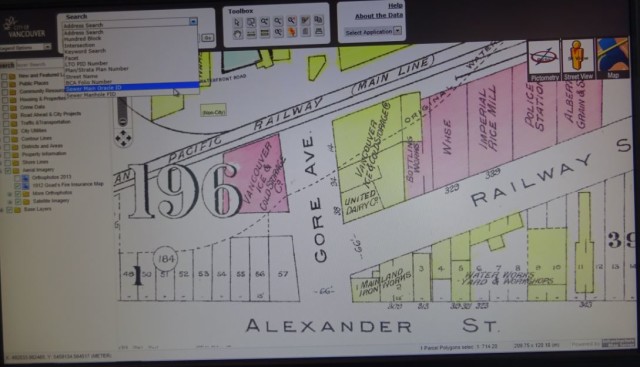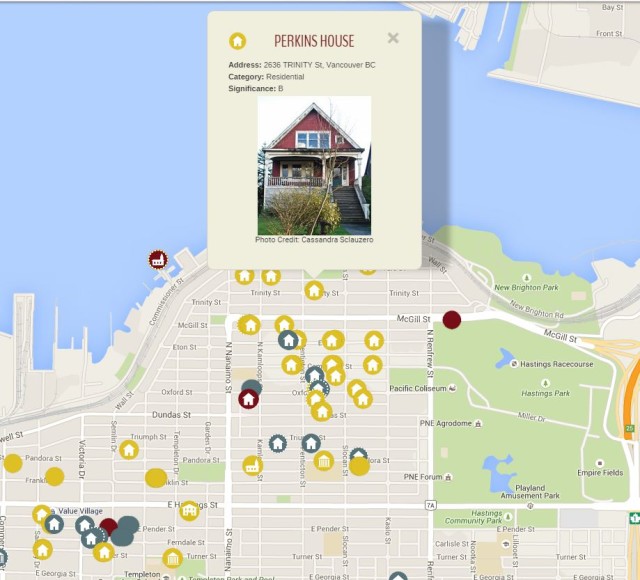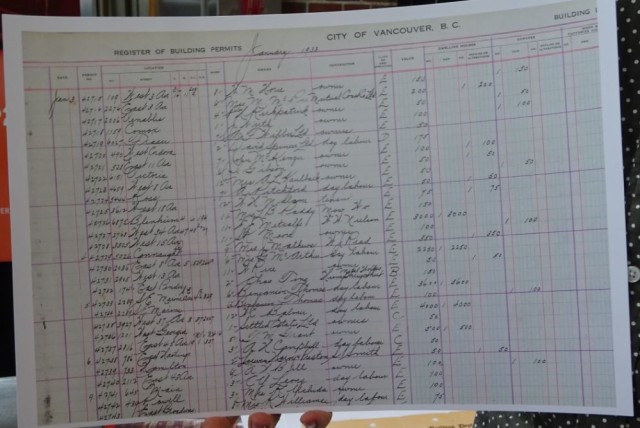If you are like me and have a couple of Michael Kluckner’s books at home, you might be surprised to learn that his latest effort is a graphic novel.
In his latest book, Toshiko, Michael has replaced his paint brush with a pencil, and he’s taken a leap into fiction.
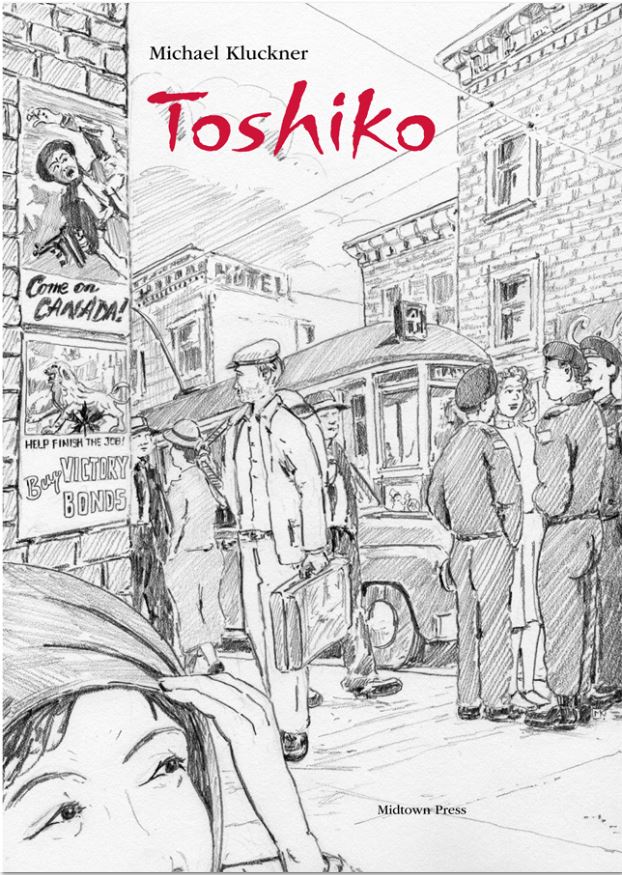
Turns out, Michael kicked off his career as a cartoonist back in the ‘70s, and in many ways, this is a return to his roots.
As expected, Toshiko is steeped in historical detail. Michael says inspiration for the graphic novel came from his 2011 book Vanishing British Columbia. In that book, he describes a farm near Shuswap Lake run by Henry and Hilda Calhoun, who when the Japanese were declared enemy aliens during the war years, the couple welcomed a group of Japanese-Canadian families onto their property.
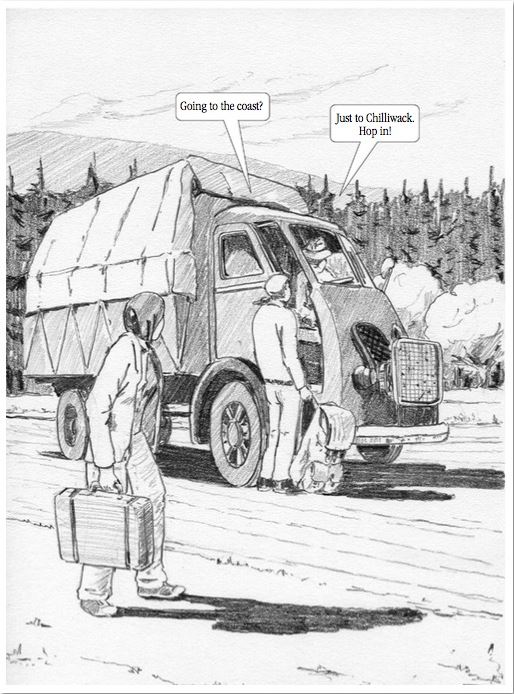
Toshiko is the name of the protagonist, a Japanese Canadian teen sent with her family to the Shuswap to work on a farm during the Second World War. In Michael’s story, Toshiko falls for a local boy called Cowboy, and in a Romeo-Juliet type scenario, his father kicks him out, and the kids take off for Vancouver.
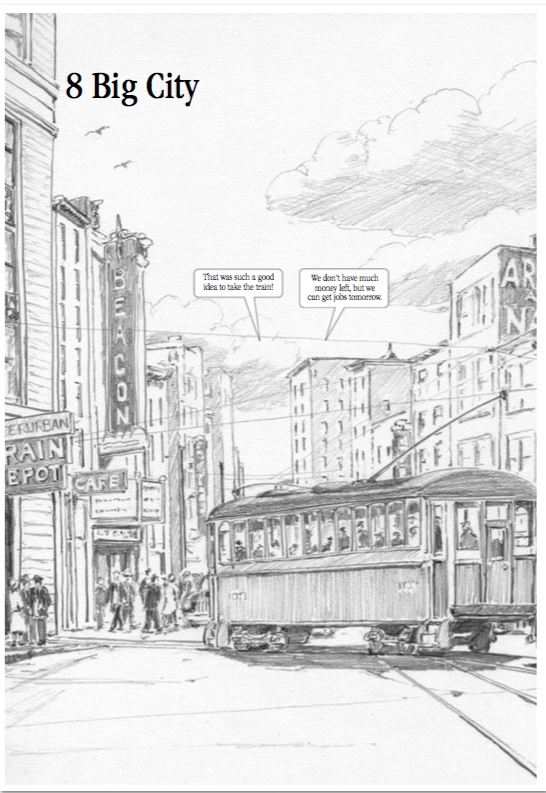 “I thought I’d have a romance develop and see how that played out as a way of describing all of the social class issues and the race issues and the war time issues,” he says. “I didn’t really know what was going to happen when I started, but I knew they were going to go to Vancouver and that would give me the opportunity to get some Vancouver stuff in and create that whole world around the Chinatown hotel and the squatter’s camp at False Creek.”
“I thought I’d have a romance develop and see how that played out as a way of describing all of the social class issues and the race issues and the war time issues,” he says. “I didn’t really know what was going to happen when I started, but I knew they were going to go to Vancouver and that would give me the opportunity to get some Vancouver stuff in and create that whole world around the Chinatown hotel and the squatter’s camp at False Creek.”
Other Vancouver landmarks to look out for include the Marine Building, Strathcona Elementary School and the Burrard Bridge.
It’s not necessarily a kid’s book, although it certainly could appeal to teens, and Michael likes the idea that it might help young people make a connection to a time in our history that may feel remote.
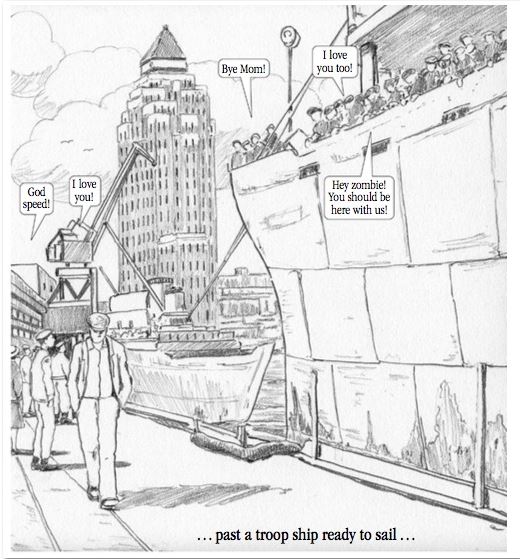
“I wanted to put some important historical facts in there,” he says. “For example the National Selective Service for him, and then the reality of her life, and that really bizarre thing that if Toshiko had married Cowboy she would have been reclassified as white.”
The book launch for Toshiko is at 3:00 p.m. on Saturday July 18 at the Nikkei National Museum and Cultural Centre in Burnaby.
© All rights reserved. Unless otherwise indicated, all blog content copyright Eve Lazarus.


